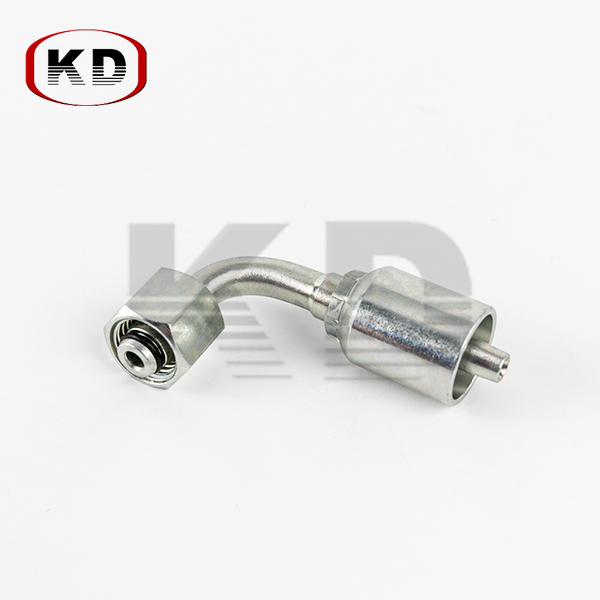Many years of foreign trade experience.
Strong production capacity, and massive stock to make sure the delivery time.
ISO quality process to make sure every piece qualifies.
One-to-one service, OEM service, provides alternative efficient solutions.

 By Admin
By Admin
Metal-to-Metal Sealing: Interlock hose fittings ensure leak-free connections by utilizing a metal-to-metal sealing mechanism. This method involves tightly compressing a ferrule or sleeve around the hose and against the fitting body. The compression creates a secure and reliable seal that prevents fluid leakage, especially crucial in applications where hydraulic fluids, oils, or gases are under high pressure. Unlike fittings relying on softer seals like rubber or elastomers, metal-to-metal sealing eliminates the risk of degradation or failure due to wear, temperature fluctuations, or chemical exposure.
Double-Locking Mechanism: One of the distinctive features of interlock hose fittings is their double-locking mechanism. This design ensures both axial and radial security by locking the ferrule or sleeve onto the hose and the fitting body simultaneously. The dual-locking action not only enhances the fitting's resistance to internal pressures and external forces but also prevents unintended disconnection. This feature is particularly beneficial in dynamic environments where vibrations, pulsations, or mechanical stress could compromise lesser secured connections.
High-Quality Materials: Interlock hose fittings are predominantly manufactured from high-quality materials such as stainless steel or carbon steel. These materials are chosen for their exceptional strength, durability, and resistance to corrosion. Stainless steel fittings excel in environments prone to moisture, chemicals, or harsh weather conditions, providing long-term reliability without rusting or deteriorating. Carbon steel fittings offer robustness and cost-effectiveness, suitable for applications requiring high mechanical strength and structural integrity.
Pressure Ratings: Interlock hose fittings are engineered and tested to withstand specific pressure ratings relevant to their intended applications. Pressure ratings are determined through comprehensive testing procedures that simulate real-world operating conditions. Hydrostatic pressure tests evaluate the fittings' ability to maintain integrity under elevated pressures, ensuring they meet or exceed industry standards such as ISO, DIN, or SAE requirements. The verified pressure ratings guarantee that interlock fittings can safely contain and control fluid pressures without leakage, contributing to system safety and operational efficiency.
Installation Procedures: Proper installation practices are essential to maximizing the effectiveness and longevity of interlock hose fittings. We provide detailed installation guidelines that outline crucial steps and considerations for achieving leak-free connections. Installers must ensure proper alignment of the hose and fitting components, apply the recommended torque during assembly to achieve optimal compression of the ferrule or sleeve, and verify the integrity of the completed installation through visual inspection or pressure testing.
Metric 24°Female One Piece Hose Fitting
